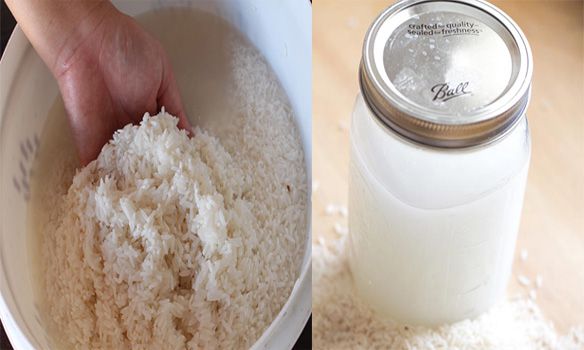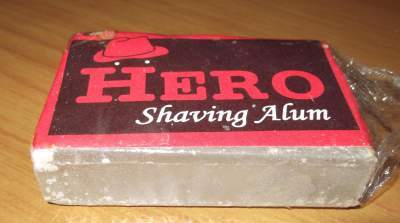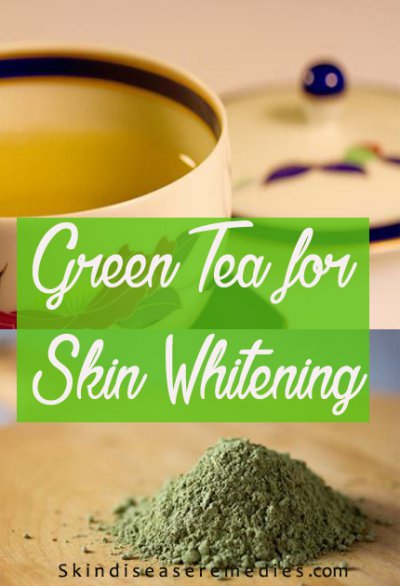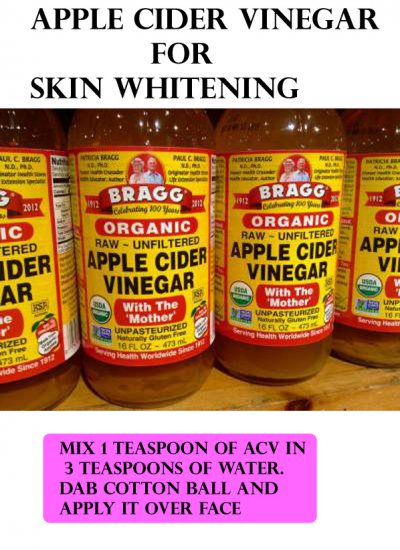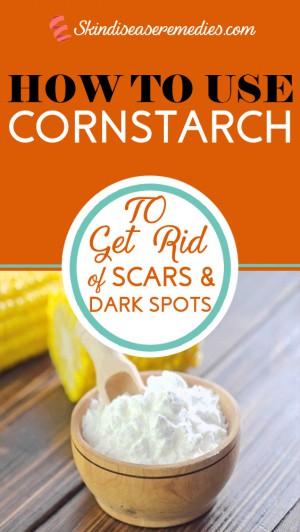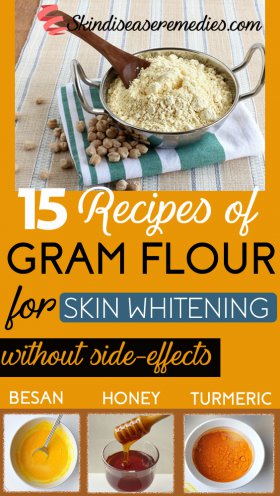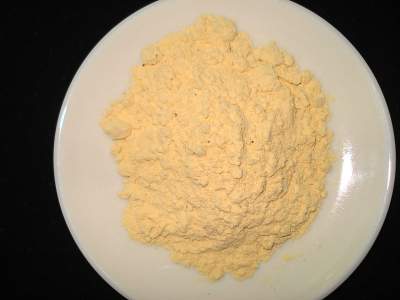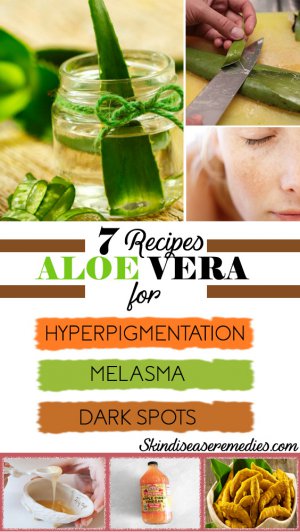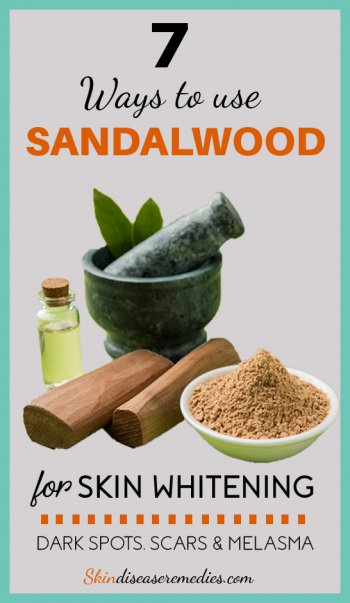
Stop visiting expensive salons and start applying sandalwood for skin whitening and to control ailments. Unlike other home remedies, sandalwood has prominent importance in religious programs. You’re going to love its aromatic fragrance.
Skin whitening normally refers to a process of reducing melanin concentration over the skin to make it look bright.
Normally, people prefer chemical filled creams for this purpose. But, experts at WebMD.com say that use of cosmetic creams to lighten the skin may come with some risks.
So beauty experts decided to go back to natural remedies that have been used since ancient times. Even if you don’t have positive results with it, at least you don’t have to deal with serious side-effects like beauty creams. (Face cream may cause contact dermatitis)
Sandalwood oil or powder is filled with assorted nutrients that can enhance the healthy functioning of your skin. Mix with some rosewater and apply topically over the skin to obtain radiant spotless face.
Why Dark Spots Appear on Face?
Dark spots are not associated with any serious health issue, it’s a cosmetic concern. Initially, you must know that your skin got its color from a pigment known as melanin. External or internal factors like sunlight, smoking, chemical creams and hormonal imbalance lead to excess production of melanin at a particular spot. (source)
In some cases, these dark spots may disappear with time and nutritional diet. The problem persists when you don’t pay attention to your lifestyle. This is where an external remedy will come in handy.
Is Sandalwood Good for Skin Whitening?
Apart from the vitamins and minerals, I personally love its aroma. It lifts your mood and helps to get out of stress. Try it once on your face and you’re going to love forever.
- Anti-tanning property: Vitamins in this mask helps to combat minor sunburns and skin tanning.
- Anti-aging: Sandalwood helps to shrink the skin pores and prevent aging wrinkles.
- Reduce complexion: When you mix sandalwood with other natural ingredients, then it helps to wipe impurities off the skin and improve complexion.
- Relief from itching: Inflammation or itching triggers when your skin lacks necessary moisture. This natural remedy mixed with rosewater helps to hydrate your dry skin.
- Controls oil and restrain acne: Excess oil secreted by your skin will be curbed by sandalwood powder. Ailments like acne and blackheads can be restrained by regular usage of this mask.
- Assorted nutrients in sandalwood powder are able to treat eczema and psoriasis.
- Vitamins residing in this home available ingredient can lighten the appearance of scars and dark sports.
- Anti-inflammatory property of sandalwood mask can reduce swelling, inflammation and tingling sensation.
- Exfoliating ability of this innate ingredient can make your skin soft and improve your skin texture.
- Vitamin C and E have the ability to promote collagen production and fade wrinkles.
- Topical application of this powder mixed with water will tighten your skin and make it look youthful.
And the list goes on… Now, let’s check recipes.
How to Use Sandalwood for Skin Whitening?
A simple recipe would be, mix required amount of sandalwood powder with water to make a thick paste-like consistency. Wash your face with water and apply the mask over the face evenly. Let it dry, and then rinse it off.
#1. Sandalwood, Gram Flour, and Rosewater
Those who yearn to have fairer skin must try this. For dry skin, you must replace sandalwood powder with sandalwood oil.
Exfoliating and cleansing ability of gram flour is essential to remove impurities of the skin.
Rose water is known to have hydrating, skin whitening and acne treating abilities.
- Mix 1 tablespoon of sandalwood powder with 1 tablespoon of gram flour and 1 teaspoon of turmeric powder.
- Add rosewater or distilled water to make a thick
- If you’ve extremely dry skin, I recommend using sandalwood oil alone.
Cleanse your face with oatmeal face mask or warm water and pat dry. Apply the face mask evenly and let it dry naturally, then rinse it off with water.
I personally recommend applying rosehip oil or rosewater after treating with this face mask.
#2. Anti-tanning Face Mask (oily skin)
Lemon juice is packed with bleaching property that can reduce dark spots and make your skin radiant.
Vitamin in this juice will make your skin firm and reduce premature aging wrinkles.
- Blend 2-3 drops of lemon juice in 1 tablespoon of sandalwood powder.
- Exfoliate your face using gram flour face mask.
- Bleaching property in lemon said to lighten your skin and sandalwood enhance skin tone.
Note: Limit the use of lemon juice if you’ve sensitive skin
#3. Sandalwood for Skin Lightening
Vitamin D, B6, and calcium residing in milk help to hydrate, promote collagen production and slow down aging.
B12 vitamin is known to reduce discoloration and selenium protect your skin from harmful UV rays.
- Take 1 tablespoon of sandalwood powder in a bowl and mix required amount of milk.
- Apply this thick paste over your face and rinse it off after 15-20 minutes.
- Try this recipe 3 times in a week.
As mentioned above, apply natural moisturizer like jojoba oil or rosewater after face mask treatment.
Add this recipe to your face mask regimen and practice it regularly.
#4. Sandalwood Night Fairness Cream
You need curd, lemon juice, aloe gel and sandalwood powder for this recipe.
Prominent for moisturizing and healing abilities, aloe vera gel reduces excess production of sebum, inhibits melanin production and promotes collagen production.
- Mix 2 tbsp of sandalwood powder with 2 spoons of curd, 2 tsp of lemon juice and 2 tbsp of aloe gel.
- After mixing thoroughly, apply the mask on prewashed face.
- Rinse it off after 15-20 minutes.
#5. Instant Glow with Sandalwood and Turmeric
Curcumin is an essential compound in turmeric powder, which is known to reduce melanin production and protects skin from UV rays.
Antibacterial property exhibited by this ingredient can treat skin ailments like acne, eczema, melasma, and psoriasis.
- Mix 2 tbsp of milk with 1 tbsp of sandalwood powder and ½ teaspoon of turmeric powder.
- Apply the mixed paste on your face in circular motion.
- Allow the mask to dry naturally for 15 minutes.
- Rinse it off with water.
#6. Skin Bleaching
You’ll need orange juice and sandalwood powder for this recipe.
Orange juice is renowned to have vitamin C that can promote collagen production. Vitamin A residing in this innate ingredient can improve blood flow and make your skin radiant.
Cleansing property of this citrus fruit can improve your skin texture and bleach your skin.
- Mix 3 tbsp of orange juice with 2 tbsp of sandalwood powder.
- Wash your face and pat dry with soft cloth.
- Apply the mixed paste on your face and leave it to dry naturally.
- Rinse it off with water and apply moisturizer to avoid dryness.
#7. Egg Yolk, Honey, and Sandalwood Powder
Benefits of honey need no explanation. Even religious scriptures and historical books extol its uses. Its application will not just make your skin radiant but treat chronic skin ailments.
Egg yolk is renowned to remove impurities and dead cells that leave your skin dark.
- Add an egg yolk, honey and sandalwood powder in a bowl.
- Mix thoroughly and add few drops of lavender essential oil.
- Apply the paste on your face, around the neck and on hands.
- Allow it to dry naturally for 15 minutes and then rinse it off with water.
Tips
- A simpler version to obtain bright skin is to mix sandalwood powder with rosewater to make a thick paste. Apply the mask over prewashed face and rinse it off. To hydrate your skin, apply rosewater using a cotton ball.
- Limit the use of lemon and other ingredients if you experience unusual signs.
- Drink enough water and change your lifestyle for healthy skin.
- Ingesting vitamin-rich food also helps your skin to glow.
- These remedies aren’t backed with strong scientific evidence, but many beauty experts recommend them as they got positive results.
- If you’re allergic to any of the ingredients listed above, then stop using them.
Did you ever try sandalwood powder for skin whitening?

